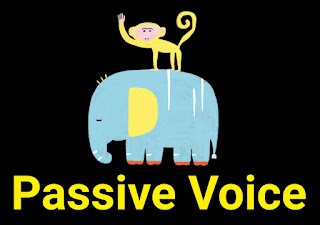PASSIVE VOICE
The voice of verb form gives information about who did and who 'received' an action. In the active voice, the subject of the sentence is the person who did the action and the object is the person who received the action: He [subject] told me [object] to leave the building. In the passive voice the subject is the person who received the action: I [subject] was told to leave the building (by him). In both sentences, the person doing the action is the same (he/him) but the structure of the sentence has changed.
The passive voice is commonly formed by using auxiliary be (e.g. was) or be with another auxiliary (e.g. have been, can't be) and the past participle (e.g. told). We do not normally use perfect continuous form in the passive voice because the structure becomes long and be has to be repeated as an auxiliary (e.g. I have been being driven (×)).
Exercise
Look at the sentences below and decide why the passive voice has been used in each.
1. Tickets must be bought from official ticket agencies only.
2. First, the coffee beans are picked and then roasted in ovens.
3. I know very little about coffee but I'm sure it can't be grown in Europe!
4. I'm sorry but my essay won't be finished today.
5. I was very amused by the film that we watched at your house the other night.
The passive voice can be used for a number of different reasons. For example, when the person who does the action is obvious (in number 1 in Exercise it is obvious that 'we' buy the tickets), when the person doing the action is not important (number 1 and 2) or when we are describing a process (number 2).
The passive is also used when we want to begin a phrase or sentence with a topic we already know. For example, in number 3, it refers to coffee which we already know about; using the active voice would mean beginning the phrase with people, which is a change in topic.
We can also use the passive when we want to avoid showing responsibility for something and distance ourselves from an action. (In number 4, the speaker knows that the action is bad and so wants to remove their responsibility.)
The passive can also be used to avoid having long noun phrases as the subject. (In number 5, using the active voice would mean writing The film that I saw at your house the other night amused me.)
In addition, the passive voice can be used when the style is formal (number 1) and it is typical of formal notices, newspapers reports and academic writing.
We can use the verb get as an auxiliary instead of be in the passive voice (e.g. I got cut off when I was on the phone). We often use get when the event is accidental, we can't control it, or it is irritating.
We can also use have/get in the passive voice to show that something or someone else did the action or caused the action to happen (e.g. I got my hair cut/ I had my hair cut). This is sometimes called the causative passive.



Comments
Post a Comment